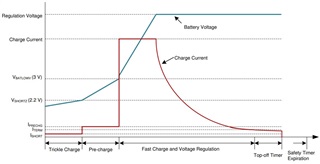Other Parts Discussed in Thread: BQ25730, BQ25731,
Hello expert,
My customer looking for high current(10A) buck-boost charger for 4s battery.
I found 3 new devices that can satisfy this requirement.
However, they also want low termination current performance.
In datasheet of BQ25723/BQ25730/BQ25731 don't have termination current specification.
Then would you tell me these device's termination current?
Also, their required spec is lower than 200mA.
Can they satisfy this requirement?
Best regards,
Kazuki Kuramochi


